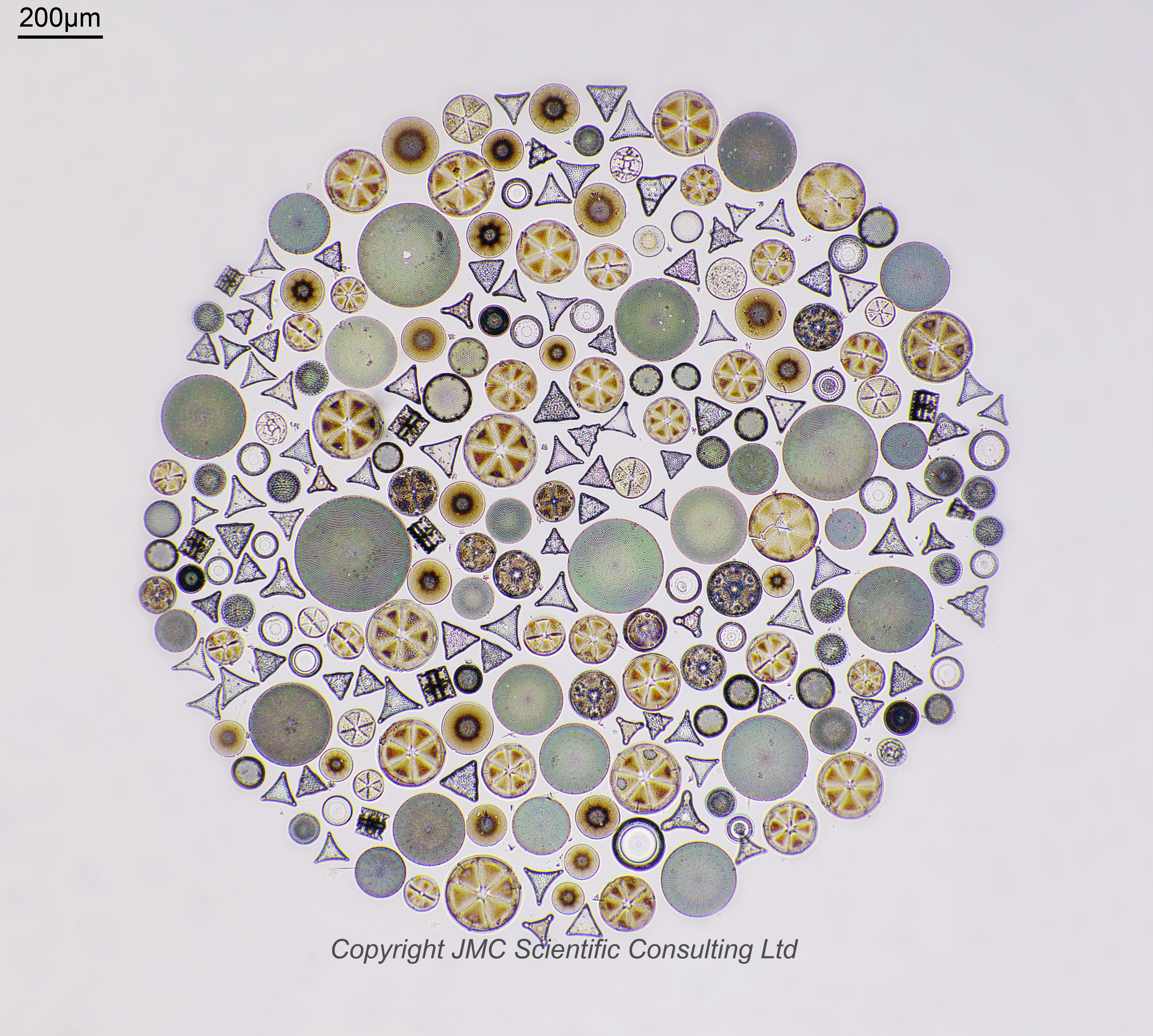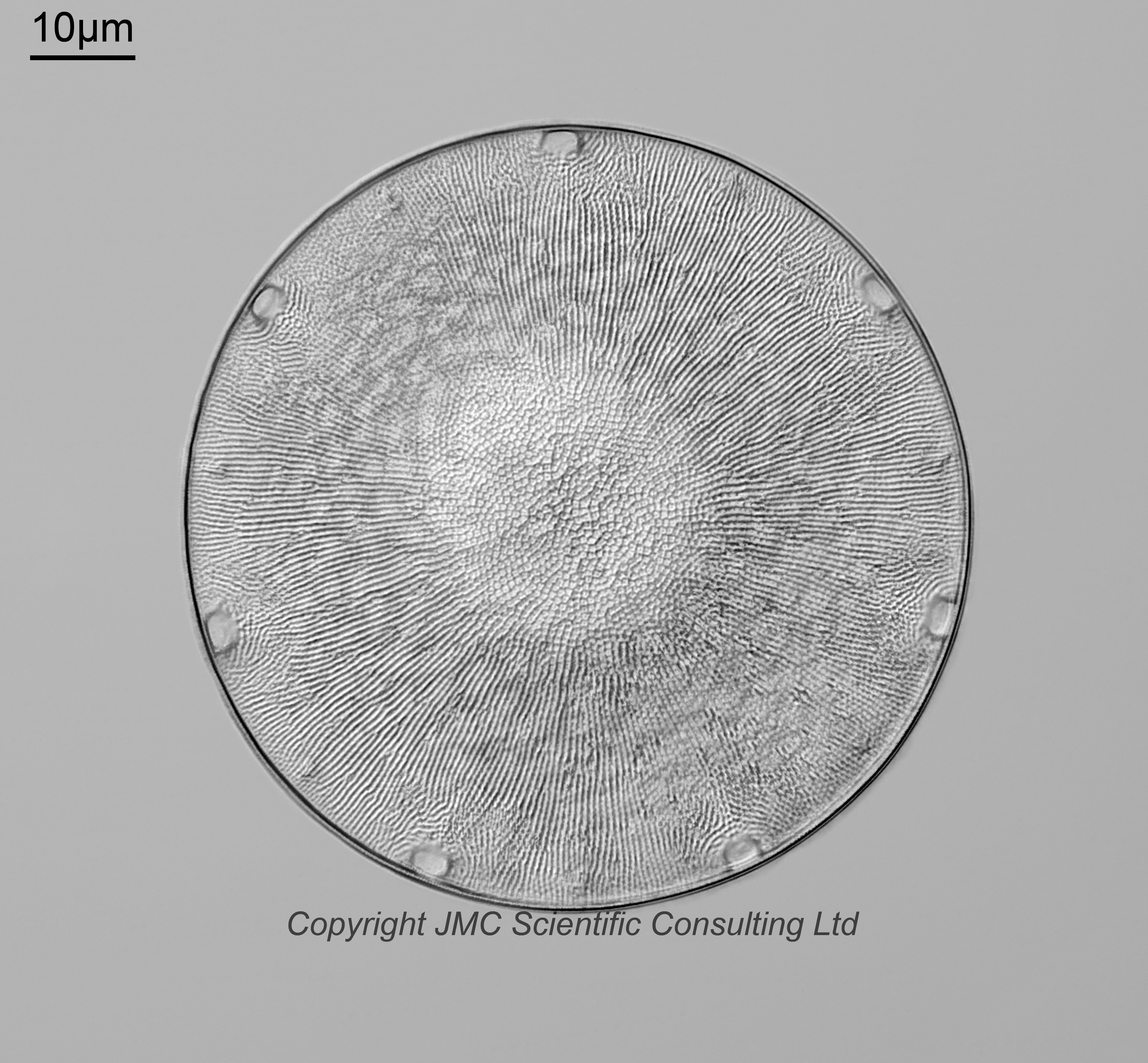










A very nice 150 form slide from Simbirsk, Russia. Prepared by Watson and Sons Ltd. Lots of very nice diatoms to image and I have selected a few to look at with higher magnification. Colour image of the whole arrangement using a 4x Nikon Plan Apo NA 0.20 objective and Canon Eos 5DSR camera, single image (unstacked).
Olympus BHB microscope using 450nm LED light. 63x Leitz Pl Apo 1.4 objective, oil immersion. Olympus Aplanat Achromat condenser, oil immersion, oblique lighting. 2.5x Nikon CF PL photoeyepiece. Monochrome converted Nikon d850 camera. Image stacks prepared in Zerene (Pmax). Names are my attempts at identifying them, unless noted.
Pseudopodosira sp. ? This is a tentative species ID and based on images I’ve seen it may be Pseudopodosira mixta. Quite a few of the diatoms on this slide look like they have issues with the fixative, and the feature in the middle of this one may be as a result of that.
Paralia selecta. There’s a couple of these on the slide, and I am fairly sure on these.
Paralia siberica. Fairly sure on these, but there seems to be some differences in the appearance of the ones of the slide, so they could be different variants (var. laevis or var. siberica).
Anuloplicata ornata. I think this is right. Also known as Melosira ornata. As with the Pseudopodosira sp. there could be an issue with the fixative in the middle of the diatom.
Xanthiopyxis sp. Fairly sure on this one, but not as to the specific species.
Rattrayella simbirskiana. Viewed from the underside. Fairly sure on this one.
Cheloniodiscus ananinensis. Thanks to Anne Gleich for IDing this one. Discussed in Pantocsek, J. (1889). Beiträge zur Kenntnis der Fossilen Bacillarien Ungarns. Teil II. Brackwasser Bacillarien. Anhang: Analyse de marine Depots von Bory, Bremia, Nagy-Kurtos in Ungarn; Ananio und Kusnetzk in Russland. Nagy-Tapolcsány, Buchdrucherei von Julius Platzko, 123 pp., 30 pls. page(s): p. 85; pl. 17, fig. 282.